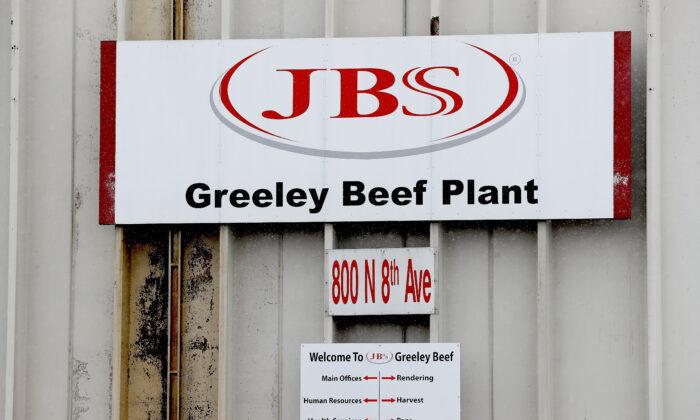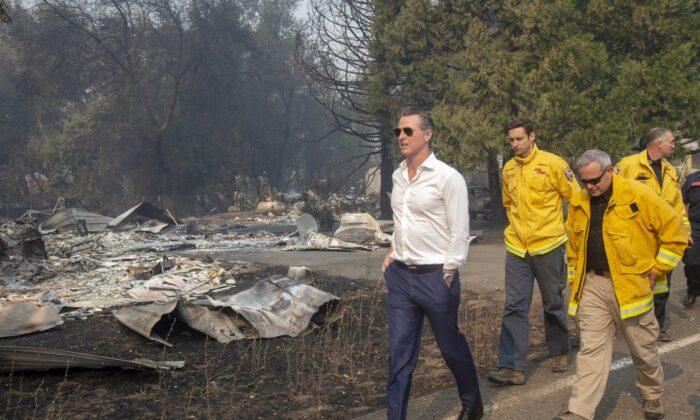The future of many climate change and renewable energy projects across the United States is in serious doubt as states slash budgets due to the fallout from the CCP virus crisis.
With fiscal black holes looming and taxation and other income having been decimated, state governors look set to cut back where they can to ensure the provision of essential services. Rebates for EVs and funding for renewables such as wind and solar are at the top of the chopping list.
Energy Investment Plummets Worldwide
According to the International Energy Agency’s (IEA) recent World Energy Investment 2020 report, the global economy is currently facing “the largest decline in global energy investment in history.”“At the start of 2020, global energy investment was on track for its largest annual rise in six years,” according to the report. “But after the COVID-19 crisis brought large swathes of the world economy to a standstill in a matter of months, investment is now expected to plummet by 20 percent, or almost $400 billion, compared with last year.”
The IEA expects global GDP to decline by around 6 percent, with a U-shaped recovery “accompanied by a substantial permanent loss of economic activity.” The reduced investment in energy-related spending is due to lower demand and reduced energy company income, particularly in the oil industry, as well as the impact of lockdowns and physical restrictions on movement.
State Budget Crises
States and municipalities across America are struggling to find ways to plug the holes in their budgets and financial plans. An economic impact assessment for the State of New York (pdf) was drawn up by Boston Consulting Group in April that indicates a projected budget shortfall of $13.3 billion as a result of the CCP virus pandemic.“The lost revenues would diminish the State’s ability to provide services to New Yorkers at a time when they need them most. In jeopardy is funding for health care, hospitals, K-12 schools, higher education, and infrastructure.”
California’s Newsom Slashes Green Incentives
In his January budget, California Gov. Gavin Newsom proposed a massive $12 billion “climate budget” that he claimed would speed the adoption of electric vehicles by firms, provide loans to businesses to adopt energy-saving practices, and provide billions in funding for preparatory measures to combat the effects of climate change, including protections against flooding, droughts, and wildfires. The Clean Vehicle Rebate Project alone was earmarked to receive $238 million in 2019-2020.With the sources of cash for the climate budget having dried up, however, the Governor was forced to recalculate.
Newsom submitted a budget revision to the state legislature on May 14, outlining the $54 billion budget gap left by the CCP virus crisis that had swamped the state’s vast $16-billion rainy day fund. Newsom said that the massive job losses and revenue shortfalls in California would require a renewed focus on what he termed the “essential priorities” of the state.
While neither carbon emissions, climate change, nor measures to protect the environment were directly addressed in Newsom’s 1,400-word statement on the budget revision, a single reference in the last paragraph served almost as a footnote to the policy goals of old, claiming the state would move to ensure “a safe, swift, equitable, and environmentally-sound economic recovery.”
“We are proposing a budget to fund our most essential priorities—public health, public safety, and public education—and to support workers and small businesses as we restart our economy,” reads the statement. “But difficult decisions lie ahead.”
California Cuts Under Fire
The California chapter of the Sierra Club environmental organization expressed its dismay at the Californian cuts, including what it referred to as plans to cut general contributions to the state environmental protection agency by over 94 percent. The Sierra Club also claims that “The May budget proposal also eliminates a biodiversity program proposed in January, and raids a fund for habitat conservation to spend the money for other purposes.”Newsom’s revision means that “$995 million in funds from the Greenhouse Gas Reduction Funds collected through the cap-and-trade program will be prioritized for a list of programs,” the Club claims, stating that “It is unclear whether those programs will include funding for incentives to accelerate transition of diesel and gas buses and heavy-duty trucks to zero-emission electric trucks and buses.”
State Policy, Company Action Key to Green Comeback
The IEA claims that “The COVID-19 crisis is hurting but not halting global growth in renewable power capacity.”As a result of the CCP virus crisis, investors across the world are set to build fewer solar arrays, wind turbines, and other renewable energy facilities. “But their growth is expected to resume next year as most of the delayed projects come online.”
The company believes that along with other environmental, social, and governance (ESG) issues, climate change action is being recognized as a key determinant of a company’s potential to create value in the future. “Institutional investors are demanding that businesses not only deliver financial performance, but also show how they make a positive contribution to society.”
EY Global Energy Leader, Benoit Laclau, believes the investment landscape is shifting, driving cash to green projects.
“This is a defining and transformative moment for the energy industry, despite the current crisis,“ he said. ”Stakeholders are looking to collaborate and invest in companies where climate change and sustainable development is embedded in their strategy. Energy leaders should take action to invest in renewables and related sustainable long-term projects, including energy efficiency, smart power networks, and low-carbon transport infrastructure.”





